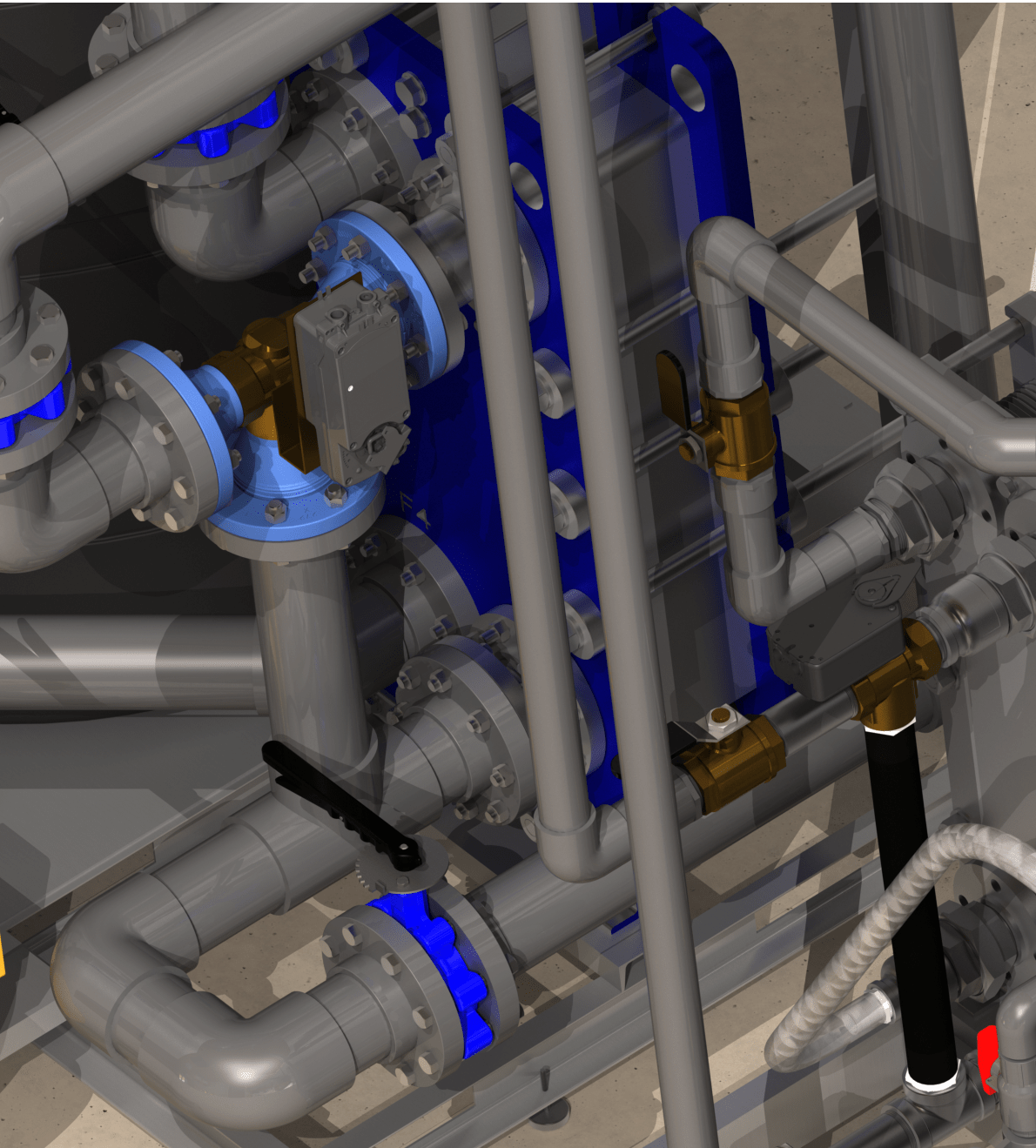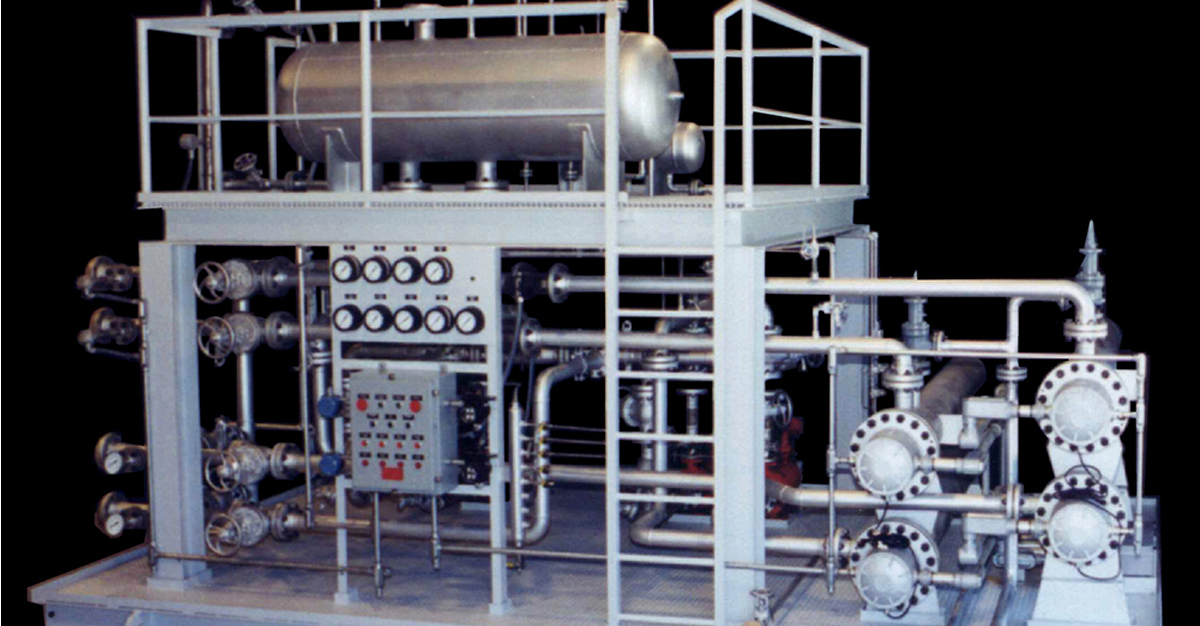Why DVS Heat Transfer Systems Use Nanotechnology to Outperform Traditional Cooling Systems
Wiki Article
A Comprehensive Guide to Choosing the Right Heat Transfer Systems for Your Requirements
Choosing the ideal Heat transfer system is essential for functional performance. Numerous systems accommodate various needs, influenced by variables such as temperature array and fluid kind. Understanding the principles behind Heat transfer, such as convection, radiation, and transmission, is important. Additionally, reviewing power resources and upkeep methods can impact long-term efficiency. A closer examination of these considerations discloses exactly how to customize a system to particular needs. What should one prioritize in this facility decision-making procedure?Recognizing Heat Transfer: Trick Principles and Concepts
Heat transfer might seem like an uncomplicated idea, it incorporates a variety of concepts that are basic for efficient system layout - DVS Heat Transfer Systems. Understanding these concepts is essential for designers and developers who intend to optimize thermal performance in different applications. Conduction, as an example, includes the transfer of Heat with strong products, while convection describes the movement of Heat within liquids. Radiation, one more crucial principle, defines how Heat can be moved through electromagnetic waves. Each of these systems plays an essential duty in identifying exactly how energy relocates within a system. By thoroughly grasping these principles, specialists can make educated choices, ensuring that Heat transfer systems run effectively and fulfill the particular needs of their applications
Kinds of Heat Transfer Systems: A Review
Understanding the principles of Heat transfer prepares for checking out the numerous kinds of Heat transfer systems offered. Heat transfer systems can be categorized primarily right into three types: radiation, transmission, and convection. Transmission includes Heat transfer with solid products, depending on direct contact in between bits. Convection, on the other hand, happens in liquids (gases and liquids) where the movement of the liquid itself facilitates Heat transfer. Radiation entails the transfer of Heat with electromagnetic waves and does not call for a tool, enabling it to take place in a vacuum. Each kind of system has distinct attributes and applications, making it important for people and companies to carefully analyze their certain needs when selecting one of the most suitable Heat transfer option.Applications of Heat Transfer Equipments in Various Industries
Heat transfer systems play an important duty across different industries, affecting efficiency and product high quality. In industrial production processes, they facilitate precise temperature control, while in food and beverage processing, they guarantee security and preservation. In addition, HVAC and climate control systems count greatly on effective Heat transfer to maintain comfortable settings.Industrial Production Processes

Various industrial manufacturing processes count heavily on reliable Heat transfer systems to optimize efficiency and improve item quality. In fields such as metalworking, Heat exchangers play a necessary role in preserving perfect temperatures during welding, spreading, and creating. These systems assure consistent Heat circulation, which is vital for achieving preferred material homes. In the chemical manufacturing sector, Heat transfer systems help with specific temperature level control throughout reactions, influencing yield and security. In fabric production, effective Heat management is vital for coloring and finishing procedures, affecting color consistency and textile top quality. By choosing appropriate Heat transfer technologies, producers can enhance power efficiency and minimize operational prices, eventually causing an extra sustainable and affordable manufacturing environment.
Food and Drink Handling
Effective Heat transfer systems are just as crucial in the food and drink handling market, where preserving excellent temperatures is essential for food safety and security and high quality. These systems play a necessary function in processes such as pasteurization, cooking, and sterilization, guaranteeing that products are safe for usage and maintain their nutritional value. Heat exchangers, for circumstances, successfully move Heat between fluids, maximizing power use while minimizing temperature level variations. Furthermore, refrigeration systems are essential for prolonging and protecting perishable products rack life. The option of Heat transfer innovation straight influences functional effectiveness and item integrity, making it imperative for food and drink makers to choose the proper systems tailored to their particular handling needs. This cautious choice inevitably contributes to customer fulfillment and food safety and security.
A/c and Climate Control
While lots of industries count on Heat transfer systems for efficiency, COOLING AND HEATING (Home Heating, Air Flow, and A/c) plays a crucial duty in preserving indoor climate control throughout different setups. These systems make use of Heat transfer concepts to control temperature level, air, and moisture quality, ensuring convenience and security in property, business, and commercial environments. Appropriately designed heating and cooling systems boost power efficiency, decrease operational costs, and decrease ecological effect. In commercial structures, for instance, efficient climate control adds to worker efficiency and customer fulfillment. In commercial applications, HVAC systems assist preserve optimal problems for devices procedure and product conservation. Selecting the right Heat transfer system is essential for conference details get redirected here climate control needs and attaining general system efficiency.Examining Energy Sources for Heat Transfer Systems
In evaluating power resources for Heat transfer systems, a comparison of eco-friendly power choices and nonrenewable fuel source factors to consider is necessary. Renewable sources, such as solar and wind, deal sustainable options that can reduce environmental impact. Alternatively, nonrenewable fuel sources stay common due to their established infrastructure and power density, prompting a mindful assessment of both choices.Renewable Energy Options

Fossil Fuel Factors To Consider
Assessing nonrenewable fuel source considerations is necessary for the performance and sustainability of Heat transfer systems. Fossil fuels, such as gas, oil, and coal, are traditional energy resources that offer substantial Heat outcome, making them preferred choices for commercial and household applications. However, their environmental influence, including greenhouse gas emissions and source deficiency, raises problems. When picking a warm transfer system, it is crucial to analyze the schedule, expense, and regulative elements associated with these gas. Furthermore, the performance of nonrenewable fuel source systems must be taken into consideration, as higher performance can mitigate some environmental drawbacks. Eventually, a balanced method weighing efficiency and sustainability can direct decision-makers towards the most ideal Heat transfer remedy for their details needs.Aspects to Take Into Consideration When Selecting a Warm Transfer System
Selecting a suitable Heat transfer system needs cautious consideration of various factors that can considerably impact efficiency and performance. One important factor is the operating temperature level variety, which determines the products and design suitable for the application. In addition, the kind of fluid utilized in the system-- whether gas or liquid-- influences Heat transfer performance and compatibility. The system's size and ability need to straighten with the details demands of the procedure to prevent inadequacies. Power source accessibility is additionally necessary, affecting operating expense and sustainability. The installment environment, including space constraints and ease of access for maintenance, plays a substantial function in system choice. Regulatory conformity and security requirements must be taken into consideration to guarantee the system satisfies all lawful requirements.Maintenance and Effectiveness Optimization for Heat Transfer Equipments
Maintaining Heat transfer systems is vital for ensuring optimal efficiency and long life. Regular maintenance tasks, such as cleansing Heat exchangers and Visit Website evaluating insulation, help protect against efficiency losses due to fouling and thermal linking. Furthermore, keeping track of system specifications, consisting of pressure and temperature, enables for early detection of abnormalities, decreasing downtime and pricey repairs. Applying a preventive upkeep routine can enhance efficiency and prolong the life expectancy of parts. Furthermore, updating to innovative control systems can boost operational performance by getting used to differing tons and conditions. By focusing on maintenance and performance optimization, operators can attain decreased energy usage, reduced operational prices, and boosted total system dependability, eventually bring about much better source application and a more lasting procedure.Future Trends in Heat Transfer Technologies
As markets progressively focus on sustainability and power effectiveness, future patterns in Heat transfer technologies are readied to go through significant changes. Advancements such as sophisticated materials, consisting of carbon nanotubes and nanofluids, assure improved thermal conductivity and performance. view Additionally, the integration of renewable resource resources into Heat transfer systems is getting momentum, advertising eco-friendly solutions. Smart technologies, including IoT sensing units, are anticipated to transform monitoring and control, making it possible for real-time data analysis for maximized efficiency. The development of modular and small systems will promote simpler setup and upkeep, providing to varied applications. These innovations suggest a shift in the direction of even more lasting, effective, and adaptable Heat transfer options, aligning with international energy objectives and ecological requirements.
Frequently Asked Inquiries
What Are the Environmental Impacts of Heat Transfer Systems?
The ecological impacts of Heat transfer systems can include greenhouse gas discharges, power usage, and potential thermal air pollution. Additionally, inappropriate disposal of products and inadequacies can contribute to resource depletion and community interruption.Just how Do I Calculate the Cost-Effectiveness of a Warm Transfer System?
To compute the cost-effectiveness of a warm transfer system, one have to assess preliminary prices, functional expenses, upkeep requirements, and power effectiveness, contrasting these variables versus the expected lifespan and efficiency of the system.Can Heat Transfer Equipment Be Utilized in Residential Settings?
Heat transfer systems can without a doubt be utilized in domestic setups. They give efficient heating and cooling services, making homes much more comfy while possibly decreasing power prices. Their adaptability enables various applications in residential environments.What Safety And Security Rules Put On Heat Transfer Equipments?
Safety and security laws for Heat transfer systems commonly consist of standards on upkeep, installment, and operation. Conformity with neighborhood building regulations, maker specs, and sector requirements is important to ensure efficient and risk-free system efficiency in numerous applications.How Do Different Products Affect Heat Transfer Efficiency?

Conduction, for circumstances, entails the transfer of Heat with strong materials, while convection refers to the motion of Heat within liquids. Recognizing the concepts of Heat transfer lays the groundwork for checking out the various types of Heat transfer systems available. Heat exchangers, for circumstances, successfully transfer Heat between fluids, enhancing power use while decreasing temperature level variations. In reviewing power sources for Heat transfer systems, a contrast of renewable energy options and fossil fuel factors to consider is important. Metals, such as copper and aluminum, conduct Heat successfully, whereas insulators like rubber and glass reduce down Heat circulation.
Report this wiki page